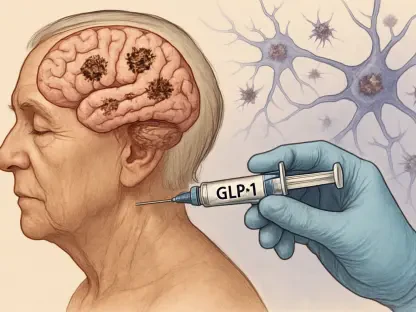Could a single seed pull double duty against inflammation, oxidative stress, microbes, and metabolic drift without the side-effect ledger that shadows many prescriptions, and could it do so in a way that complements rather than competes with standard care? That is the provocation driving a surge of papers on black cumin (Nigella sativa), a modest pantry staple now appearing in studies on diabetes adjuncts, antimicrobial coatings, and even antiviral leads.
The renewed attention is not nostalgia for folk cures. It springs from a modern problem: chronic diseases rarely hinge on one unruly molecule or pathway. Conditions such as type 2 diabetes, atherosclerosis, and chronic respiratory disorders sit atop intertwined networks—low-grade inflammation, immune misfires, microbial triggers, and oxidative imbalance. Single-target drugs still carry the load, but many leave residual risk that shows up in lipid panels, C-reactive protein, or recurrent infections.
Why It Matters
For decades, the core model in pharmacology has aimed at one mechanism at a time: a receptor antagonist here, an enzyme inhibitor there. This approach remains powerful for acute events and well-defined targets. Yet, in multi-factorial conditions, it can feel like playing whack-a-mole—subdue one node, and another picks up the slack. A complementary, multi-component tool that tempers several drivers at once could fill a gap.
Black cumin has stood on apothecary shelves across Asia, the Middle East, Africa, and the Mediterranean for respiratory, digestive, and skin complaints. Contemporary labs have stripped the romance from that history, mapping the seed’s chemistry—thymoquinone (TQ), phenolics and flavonoids, triterpenoids, alkaloids, and essential oils—to measurable effects in cells, animals, and early human trials. The question is not whether it works in a general sense, but where it offers the greatest benefit and how to deliver it safely.
Inside The Seed
Thymoquinone consistently anchors study conclusions. It scavenges free radicals, dampens pro-inflammatory cytokines, and, in cancer models, nudges cells toward apoptosis and cell-cycle arrest. Researchers also report TQ’s influence on metabolic signaling, suggesting a rationale for improvements in insulin sensitivity and lipid handling when used alongside standard therapy.
However, TQ does not work alone. Phenolics and flavonoids add depth to antioxidant capacity and exert effects on NF-κB and allied pathways, while triterpenoids and alkaloids broaden anti-inflammatory and antimicrobial reach. Essential oils, notable for their volatility and scent, pull their weight with bactericidal and antifungal actions, and they may also modulate immune response. In the words of one formulation scientist, there is “enhanced free-radical scavenging and broader antimicrobial spectra” when these constituents are packaged as plant-derived nanoparticles or nanocomposite films.
Formulation science has quietly become the decisive act. Oils, non-volatile fractions, nanoparticles, and seed-oil-infused films alter stability, solubility, and tissue targeting. A recurring goal is to boost bioavailability, especially for TQ, which degrades under light and heat. Nanoemulsions and polymer carriers show promise by protecting the actives and steering them toward intended tissues, whether metabolic organs or microbial interfaces like skin and mucosa.
Signals From The Clinic
Inflammation and immune balance have supplied the clearest signals so far. “Dose-dependent immunomodulation” appears again and again in preclinical work, hinting at a middle lane between blunt immunosuppression and mild nutritional support. In small human studies, reductions in inflammatory markers paired with tolerability have suggested a role in low-grade, chronic states rather than high-stakes autoimmune flares.
The metabolic story is equally compelling. Across preclinical models and early trials, investigators report “concurrent improvements in oxidative stress markers and lipid profiles,” a pairing that conventional regimens often miss when they focus on glycemia alone. In type 2 diabetes adjunct studies, black cumin preparations have been linked with improved fasting glucose, better insulin sensitivity, and modest gains in HDL, while oxidative markers ticked down. These are not replacements for metformin, GLP-1 receptor agonists, or statins, but they hint at fill-in-the-gap support.
Microbial data add texture. Extracts and oils inhibit Staphylococcus aureus, Escherichia coli, and Candida species; essential oil fractions demonstrate “bactericidal activity in animal models.” A limited neonatal comparison even found performance comparable to topical mupirocin in context-specific settings, a finding that begs for larger, controlled trials before clinical claims are made. In the respiratory realm, early COVID-19 investigations noted “shorter illness duration with seed oil adjuncts” in mild cases, but researchers emphasized the need for replication and tighter protocols.
The Wider Therapeutic Canvas
Antioxidant capacity is a unifying theme across preparations. Seed oils, non-volatile fractions, and plant-derived nanoparticles consistently mop up free radicals and appear to downshift downstream inflammatory signaling in animals. This may explain why metabolic improvements and immune moderation often travel together. Moreover, gastrointestinal models show mucosal protection under irritant stress, aligning with a broader narrative of barrier support, though human data remain thin.
Oncology presents a bolder, still preclinical frontier. TQ has shown “dual action—direct cytotoxicity and inflammation reduction,” which has positioned it as a candidate for combination regimens rather than a solo anticancer agent. Breast, gastric, pancreatic, and glioma lines have all exhibited sensitivity in vitro. The real hurdles are delivery and dosing—achieving therapeutic levels in tumors without collateral toxicity and without undermining standard therapies.
Antiviral signals are not confined to pandemic-era studies. Lipophilic fractions have inhibited hepatitis C RNA helicase in vitro, pointing to a defined enzymatic target. This mechanistic foothold suggests a drug discovery path: refine TQ derivatives and allied molecules, test structure–activity relationships, and design formulations that maximize exposure where it counts. As one medicinal chemist put it, the goal is to move from “botanical promise to actionable leads.”
How To Use It Without Overusing It
Clinicians weighing adjunctive use can approach black cumin through a simple framework that starts with fit. Does the patient present multi-factorial risk—metabolic syndrome, type 2 diabetes with residual dyslipidemia, or chronic low-grade inflammation—despite standard care? If so, a standardized oil or extract with quantified TQ and phenolics may be appropriate to trial alongside current medications, with conservative dosing and careful monitoring.
Format matters. Systemic targets usually favor oils or non-volatile extracts, ideally with delivery technologies that address bioavailability. Topical needs—mild skin infections or barrier support—may benefit from essential-oil-rich preparations or composite films, though these require rigorous dermatologic testing. Regardless of route, safety checks are nonnegotiable: review for interactions with anticoagulants, antihypertensives, and antidiabetics; then track fasting glucose, HbA1c, lipid panels, CRP, and oxidative stress markers to judge additive value.
For product teams and researchers, the to-do list is specific. Large, randomized trials should focus on defined indications—type 2 diabetes adjunct therapy, mild respiratory infections, inflammatory disorders—with dose–response arms and standardized chemotypes. Pharmacokinetic mapping of TQ and co-constituents across oils, extracts, and nano-formulations can define therapeutic windows. Quality control must lock in batch-to-batch consistency and target ranges for key constituents, enabling clean comparisons with standard agents and combination protocols.
What Comes Next
The evidence arc points toward adjunctive roles and drug discovery opportunities rather than wholesale replacement of standard care. Multi-target modulation—oxidative, inflammatory, metabolic, microbial—fits the physiology of chronic disease better than any single lever, but translating that into clinical wins depends on standardization and scale. Comparative effectiveness trials against frontline agents, particularly in metabolic and low-grade inflammatory states, will show whether benefits are additive, synergistic, or merely hopeful.
Formulation innovation could be decisive. Nanoparticles, nanoemulsions, and composite films not only stabilize actives but may unlock application-specific potency, from antimicrobial surfaces to targeted delivery in metabolic tissues. If structure–activity insights around TQ guide the design of refined derivatives, the field may gain leads with drug-like properties while retaining the multi-pathway advantage that drove interest in the first place.
Practical next steps had emphasized clarity over hype. Indication-first trials with rigorous endpoints, pharmacokinetics that map real exposure, and safety studies that account for common polypharmacy patterns were the immediate priorities. With those pieces in place, black cumin was poised to shift from compelling hypothesis to credible option: an adaptable, multi-target platform that, used judiciously, could make standard care work harder without proportionally increasing risk.









